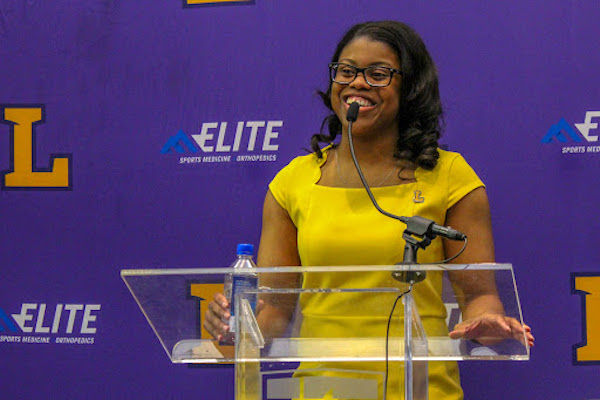At 27, Lauren Sumski became the youngest Division I Head Coach in the country when she was named Lipscomb University’s Head Women’s Basketball Coach in April of 2019. She arrived in Nashville after two seasons as the Head Coach at Division III’s Rhodes College and with ties to the state, having started her collegiate playing career at the University of Tennessee before injuries altered her career.
Three things I learned in year one as the Head Coach at Lipscomb are:
- Recruiting becomes a different animal, but you have to start by recruiting the people in your department, the people in your hallway and the people in your locker room. Those become your primary recruits. If your focus doesn’t start there, I’m convinced you’ll be looking for a new job sooner than later. Bringing in new talent is great but you have year zero where you are working to establish a sustainable culture. That doesn’t work if your focus is on the next thing instead of what is right in front of you everyday. I also think it’s unfair to those kids who trusted in the university that you just signed on to lead their women’s basketball program.
- Now, as you establish your culture and invest in the team right in front of your face, you have to go out and get talent. Recruiting at the DI level is completely different and unlike anything you may have seen at other levels. I firmly believe prospects at lower levels make decisions based on specific things they are looking for. At the DI level, I think prospects want to be won over by you, your program, and your institution. You have to develop a plan and a strategy that you’re committed to when it feels hard, that will allow you to win as you battle other programs that are likely offering similar things that you are. The learning curve is sharp, and that’s part of it. However, I do believe that rushing it will ultimately hurt you in the long run. If you haven’t been recruiting at the DI level before now, you’re already a little behind because kids at the DI level have been getting recruited for years. At good DIIs and DIIIs, you’re recruiting a year out for the most part. Maybe two years out if you’re good. After you take that job, you have to do your best to access what your program’s pressing needs are and find that first while beginning to building relationships with younger prospects. Don’t be afraid to bridge the gap with graduate transfers and other transfers who may be immediately eligible until you can get a full year of recruiting prospects to your new institution under your belt.
- Someone told me to best focus on the rising junior class that first summer and just tank the rising senior class in my first season. I didn’t understand why I would just tank the rising senior class, but I quickly learned that there was a lot of truth to what they were saying. Coming in behind the 8-ball with no reputation at that level made it harder to get the kids I wanted. And the kids that were super excited about us weren’t the best talent fits for what I was looking for and the way I was wanting to play. Again, competing for graduate transfers helped bridge that gap.

